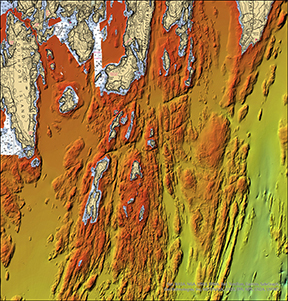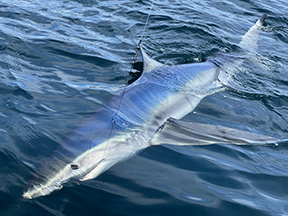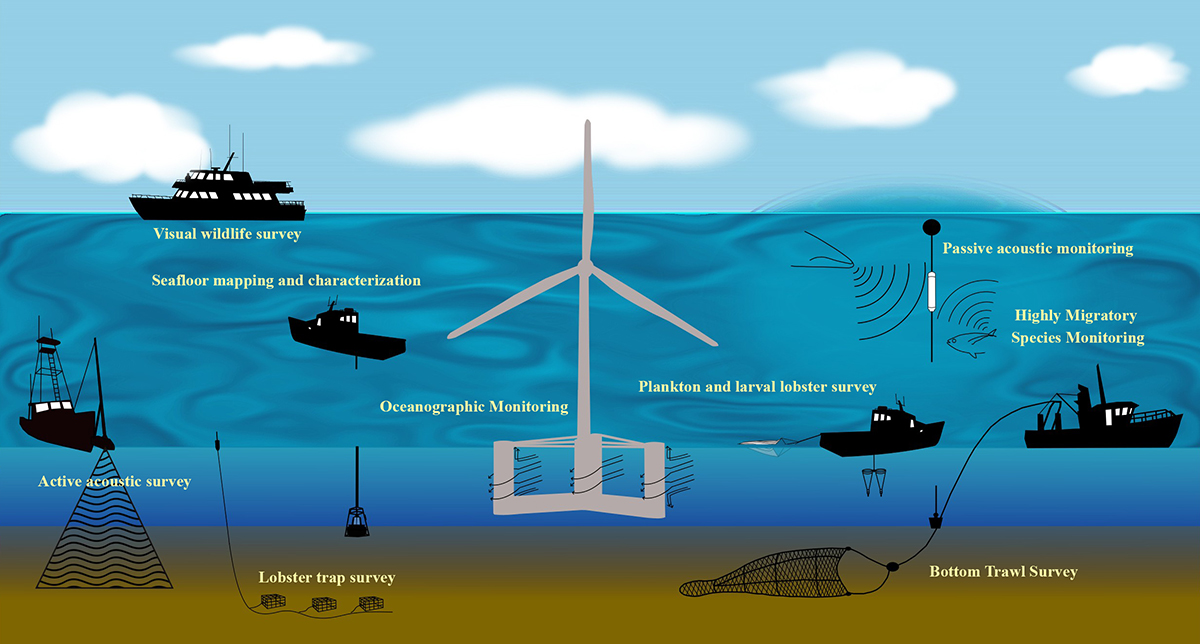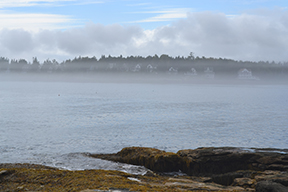The ecology and the environment division was created in 2022 to monitor and study changes in the Gulf of Maine ecosystem. Monitoring and research in the division cover multiple facets of the Gulf of Maine ecosystem, from mapping and understanding subtidal habitats and the species that inhabit them, to understanding movement and use of the Gulf of Maine by large pelagic predators. The diverse programs in this division are listed below.
Maine-New Hampshire Inshore Trawl Survey

The Maine-New Hampshire Inshore Trawl Survey is a resource assessment survey performed along the coastal waters (roughly out to 12nm) of Maine and New Hampshire. Surveys have been conducted twice a year in the spring and fall since the fall of 2000. This survey is a collaborative research project using a commercial fishing vessel as the platform. Data from this survey are used to inform management of our marine resources.
More information is available here on the Maine-New Hampshire Inshore Trawl Survey.
Maine Coastal Mapping Initiative

The Maine Coastal Mapping Initiative (MCMI) is an effort to improve coastal and marine maps in the region and improve our understanding of marine habitat. MCMI collects hydrographic quality bathymetry using a multibeam echosounder, water column and seafloor water quality data, sediment samples, seafloor video, and benthic fauna information. Data collected by MCMI are used to update NOAA navigational charts and have the power to answer multiple research and management questions about subtidal habitat in the Gulf of Maine.
More information is available here on the Maine Coastal Mapping Initiative.
Highly Migratory Species

Through collaborative research, the Highly Migratory Species (HMS) program aims to improve our ecological understanding of shark and tuna species endemic to the Gulf of Maine, and to work with members in the fishing industry and academia on relevant issues facing the species.
More information is available here on DMR's Highly Migratory Species Program.
Offshore Wind Research

The offshore wind research program is focused on studying the impacts of floating offshore wind energy infrastructure development on the Gulf of Maine ocean ecosystem and ocean users. This includes the coordination and implementation of ecosystem studies in Maine’s Floating Offshore Wind Research Array to investigate cumulative impacts from floating offshore wind development. The studies expand the spatial footprint, duration, frequency, and intensity of studies required by BOEM.
More information is available here on DMR's Offshore Wind Research program.
Halibut Research

Atlantic halibut is managed by the New England Fishery Management Council as a part of the Northeast multispecies fishery. A portion of halibut quota is allocated to account for catch in state waters, and this supports Maine’s state waters halibut fishery in the spring. DMR crafts measures which seek to maintain catch within this state waters allocation. DMR’s research focuses on improving our understanding of Atlantic halibut life history and movement throughout the Gulf of Maine.
More information is available here on DMR's Halibut Research.
Environmental Monitoring

DMR’s Boothbay Harbor Environmental Monitoring station is located at the DMR lab in West Boothbay Harbor. This station started collecting observations in 1905 and is the longest running continuous water temperature monitoring station in the Gulf of Maine. Currently, observations of sea water temperature, conductivity, pH, dissolved oxygen, and total dissolved solids are recorded at hourly intervals and are available for viewing through an online data portal. In 2025-2026 a second environmental monitoring station will be added off Burnt Island, which will deploy similar instrumentation.
More information is available here on DMR's Environmental Monitoring Program.